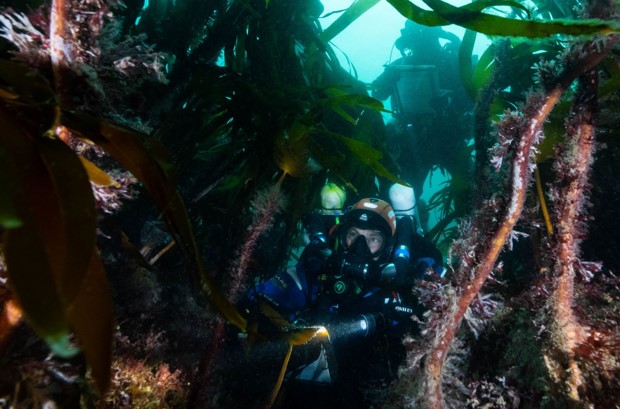
|
|
|
Keynote speakers > Dr. Pierre THIRIETDr. Pierre THIRIET, PatriNat (OFB, MNHN, CNRS, IRD), Dinard Marine Biological Station (National Museum of Natural History), Dinard, Northern Brittany, France "Scientific diving: an essential tool to study fish ecology in subtidal reefs" Dr. Pierre Thiriet is a coastal fish ecologist and professional CCR Hypoxic Trimix Diver, working at the interface between ecological research and environmental management. He specializes in long term monitoring and research on demersal fish assemblages associated with coastal 3D structured benthic habitats (rocky reefs, kelp forests, seagrass meadows, artificial reefs, offshore wind farms, etc) in both Mediterranean and NE Atlantic coasts. His early studies focused on the ecology of Mediterranean rocky reef fish in the context of habitat degradation (loss of canopy-forming fucoids). He investigated the ecological processes underlying the effects of macrophytes on fish assemblage structure. To disentangle the functions 'habitat former' and 'Trophic source' that macrophytes have in infralittoral temperate rocky reef systems, Pierre combined scuba-diving descriptive research, in-situ and ex-situ experimental habitat manipulations, and stable isotopic analyses. For this purpose, he started working on adapting/developing scuba-diving based sampling methods. He developed a harvesting protocol (enclosed anesthetic station vacuuming) to enhance the monitoring of crypto-benthic fish hidden below macrophytes. In another context, Pierre also worked on optimizing Underwater Visual Census protocols for monitoring MPA ecological effects on fish, from crypto-benthic fish to large vagrant predatory fish. After 6 years working on Mediterranean coasts, Pierre moved to Brittany to work at the Dinard Marine Biological Station. He initiated descriptive research on NE Atlantic rocky reef fish that were under-studied in France. For this purpose, he adapted UVC protocols to Laminaria kelp forests by using two stacked divers, one observing fish above the canopy and the other below (Picture below). Pierre’s work was refocused towards more policy-oriented applied research and scientific policy advice, when he took up a permanent position at the joint Research and Expertise Center ‘PatriNat’ (still in Dinard). For 6 years at PatriNat, Pierre has coordinated or been directly involved in the national-scale development of methods and strategies for the long term monitoring of coastal fish assemblages, on both Mediterranean and Atlantic French coasts, in the context of MSFD, OSPAR, MPAs and Offshore Wind Farms. To achieve a more complete picture of the responses of fish assemblages to natural and anthropogenic stressors, Pierre works on combining multiple complementary observational research methods: fish Underwater Visual Census (UVC) protocols (for scientists and citizens), sea floor SfM photogrammetry, Baited Remote Underwater Stereo Video, multi-beam and split-beam echosounders, and environmental DNA metabarcoding. In this context, Pierre routinely carries out UVC surveys. He also uses UVC to ground-truth blind methods such as eDNA and echosounding. Pierre is convinced that new technologies must not be overlooked for long-term environmental monitoring and research. Nevertheless, he believes they are complementary to scientific diving that is still an essential tool for coastal ecologists. https://www.researchgate.net/profile/Pierre-Thiriet https://www.patrinat.fr/fr/annuaire/pierre-thiriet-6174
PatriNat divers surveying fish in kelp forest (credit: Alexis Chappuis, UNSEEN expeditions) |


